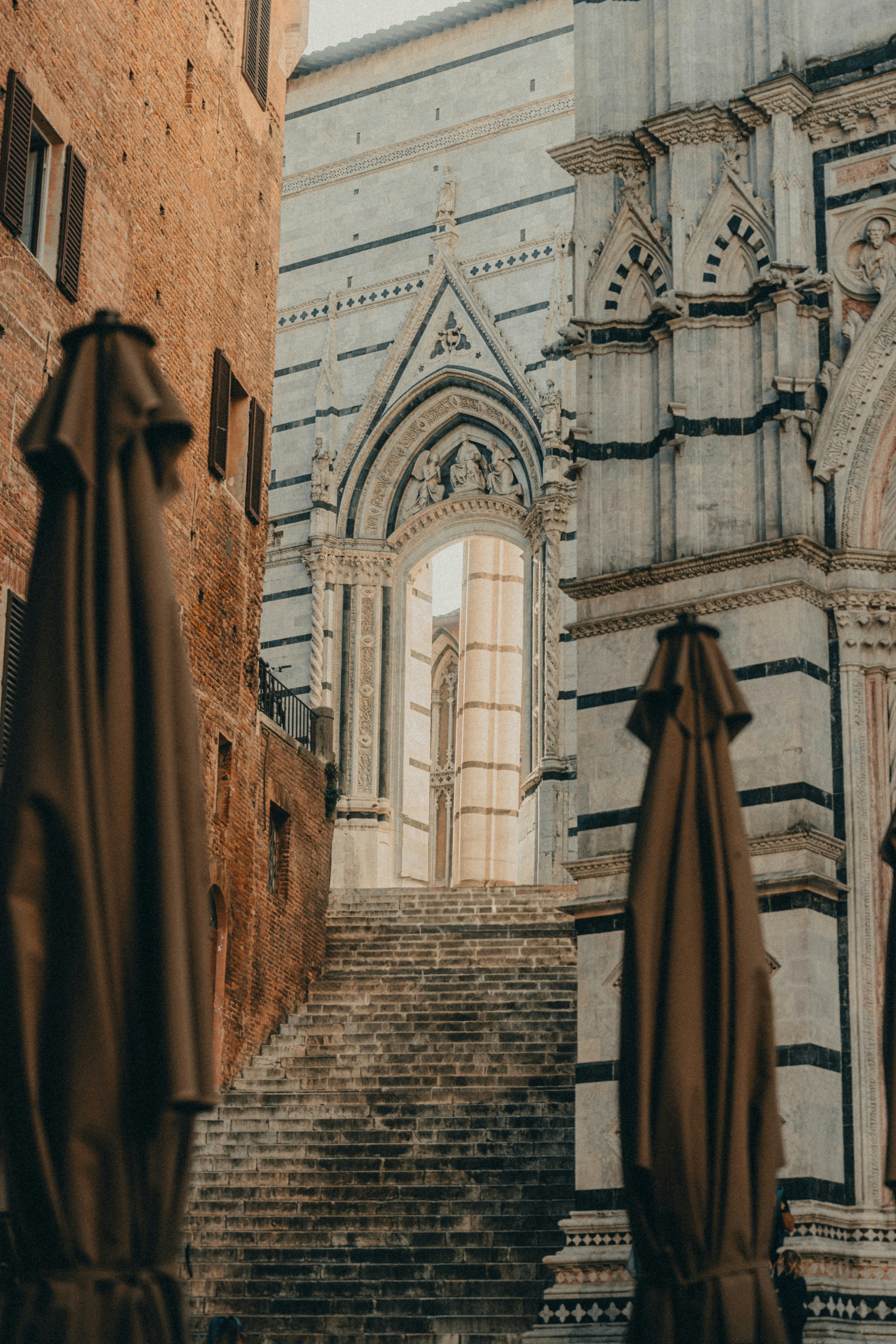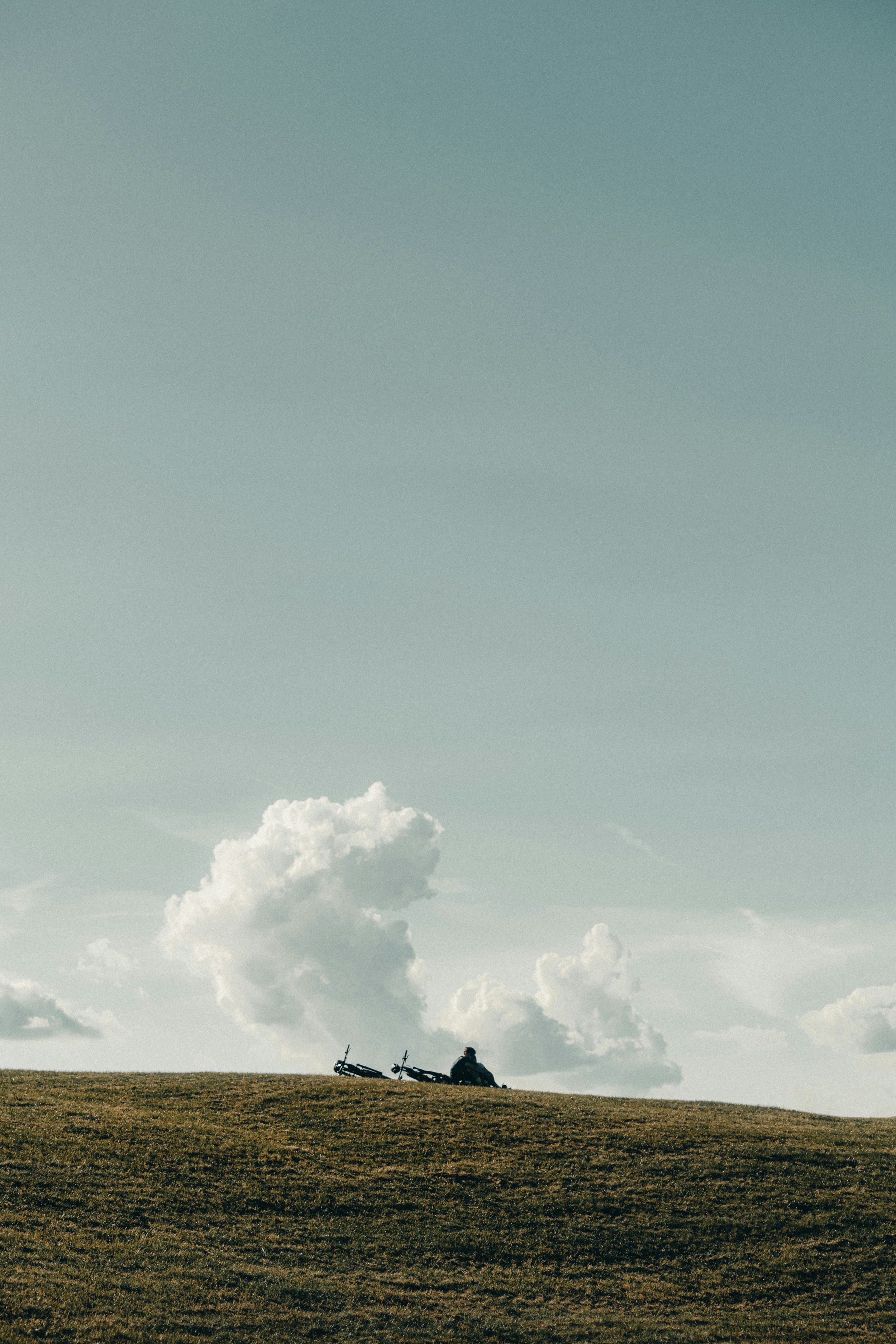Castle of the Soul

Castle of the Soul
Dana Delibovi
On Learning Teresa of Ávila in New York
I spent my first six years of life near a castle. My mother took me often to see it. Afterward, we walked to Albie’s store where, from what my mother told me, she bought cigarettes and soda. She said my first word was Coca-Cola. We lived on the suburban border of Connecticut and New York State. Our gravel road ran perpendicular to a long sloping field. At the top of the slope sat Ward’s Castle—actually, a concrete mansion with a crenelated turret built by William E. Ward in 1876. The clearest recollection I have of the scene feels autumnal. I can see the tall, golden grass with its heavy seed-heads all around me, as I looked uphill toward the castle. Clouds drifted by the turret, sometimes blocking the sun, then sliding away to let the light stream once more. I am wearing a pink jacket.
My mother must have been there, but I cannot remember her presence. When I revisit this memory, I am alone in the grass with the castle in view. I am the 6-year-old version of Wyeth’s painting, Christina’s World, surveying the fields, with Ward’s Castle instead of a farmhouse on the ridge. I am discovering myself. I am separating from my mother. I am looking inside while looking outside.
I wanted to enter the Ward’s Castle. Since it was someone’s private residence, I couldn’t get too close. But to this day, the castle stands inside me. It is in my soul.
*
The 16th century philosopher St. Teresa of Ávila claims we each have a castle inside us. “I began to think of the soul,” she writes, “as if it were a castle made of a single diamond or of very clear crystal, in which there are many rooms, just as in Heaven there are many mansions.” The deepest rooms in the soul-castle are God’s abode, the place where God can be said to live within us.
It’s all nice and tidy, until a contradiction arises. Teresa defines the soul as a crystal castle. That is, she defines the soul as a structure. But a few paragraphs later, she describes the soul as entering into the rooms of the castle, moving ever closer to God’s room. That is, she describes the soul as a conscious faculty than can travel into the structure in pursuit of self-knowledge. A thing cannot be both the structure and the energy that travels within that structure. I angrily dismissed Teresa as just plain wrong. I completely missed the next paragraph, which would have shown me that I was mistaken.
*
A crystal castle never comes cheap. Walt Disney World sells a crystal replica of Sleeping Beauty’s castle, at a price of $100,000 or Cinderella’s Castle covered in a pavé of multicolored crystals for $250,000. Cinderella bought her own by sweeping ashes and fighting her stepsisters for a prince. Sleeping Beauty slept hers off for a hundred years. Teresa of Ávila had to buy into an immortal soul and an indwelling God. This castle has been far too pricey for most modern philosophers, who reject the existence of the soul completely. The philosopher Derek Parfit was glad to discard the soul or any other idea of a permanent self, as if he was breaking crystal, shattering walls of glass so he could “live in the open air.”
*
At the lowest point in my adult life, I spent almost every Saturday and Sunday with a view to another castle. My apartment in Astoria Queens was no place to be in the daylight. I had trouble putting sheets on the bed and emptying the beer bottles I used as ashtrays. The place was only suitable for occupancy at night, when I wrote my earliest attempts at poetry under the focused light of a single lamp illuminated with the only lightbulb I cared to own. In those days, this home of mine was no castle, but I could see one when I walked over the 59th Street Bridge into Manhattan.
I would leave very early on a weekend morning, and pick up a cup of coffee at the diner near the Broadway stop on the old RR train. In my black Reeboks, I would stride the 3 miles into Manhattan. Crossing the bridge on its steel-grate footpath, I looked down upon Roosevelt Island and its castle-like ruins—a vacant sanitarium, built when people with mental illness were locked away for good. Sometimes, I went further to art museums or stopped at a few bistros to drink wine, wandering the city alone in the open air, until tears started flowing down my cheeks in the twilight. I took the subway back home. Then, I would sit beneath my lightbulb trying to write poems and trying to keep hold of the soul I was close to losing.
Eventually, I found other souls who could help me. At their suggestion, I decided to give God a try even though I considered faith illogical and uncool. I moved out of my apartment of pain. One night, I stood on 16th Street after a party, the streets of Manhattan glittering with the crystal shards embedded in the glass-phalt paving, the baroque façade of St. Francis Xavier looming overhead. I found myself telling a friend: “It’s pragmatic to seek God. The most practical thing there is.” Another contradiction: How can the mystical be practical? The same way a soul can be the castle and enter the castle, as it turns out.
*
“Now let us return to our beautiful and delightful castle and see how we can enter it,” Teresa of Ávila writes. “I seem rather to be talking nonsense, for, if this castle is the soul there can clearly be no question of our entering it. For we ourselves are the castle: and it would be absurd to tell someone to enter a room when he was in it already. But you must understand that there are many ways of “being” in a place…You will have read certain books on prayer which advise the soul to enter within itself: and that is exactly what this means.”
In just one paragraph, Teresa recognizes and resolves the contradiction that I thought she ignored. I was impervious to that paragraph for four decades. Maybe I couldn’t accept its implication, that I needed to do the “inside job” of searching within my own self, to find both my soul and, God forbid, God.
Life took me through fields, bridges, subway cars, books, failures, and a few more castles. It finally compelled me to look deeper inside. Things are different now. I make a conscious effort to allow my soul to enter itself and seek the divine, that which Teresa of Ávila called prayer. Ward’s Castle went through a few things, too. It suffered years of neglect and was abandoned before doing a stint as the National Cartoon Museum. I never got to visit in its museum days, and today it is again a private home. Once more, I can’t go in. But I can enter my own my castle, my soul, that thing I first discovered with a child’s eyes.
Dana Delibovi
Writer & Poet
Dana is a poet, essayist, and translator. Her new book of translations and essays, Sweet Hunter: The Complete Poems of St. Teresa of Ávila, is forthcoming from Monkfish Book Publishing on St. Teresa’s Day, October 15, 2024. Delibovi’s translations from Teresa and original prose about the saint have appeared in Presence: A Journal of Catholic Poetry, U.S. Catholic, After the Art, Confluence, Catholic Poetry Room, and an anthology from Word on Fire. Delibovi's writing has also appeared in Apple Valley Review, Bluestem, Noon, Psaltery & Lyre, Salamander, and many other journals. She is a 2020 Pushcart Prize nominee, a 2020 Best American Essays notable essayist, and a co-winner of the 2023 Hueston Woods Poetry Contest. Delibovi is consulting poetry editor at the literary e-zine Cable Street.
Photography by Sir Simo




